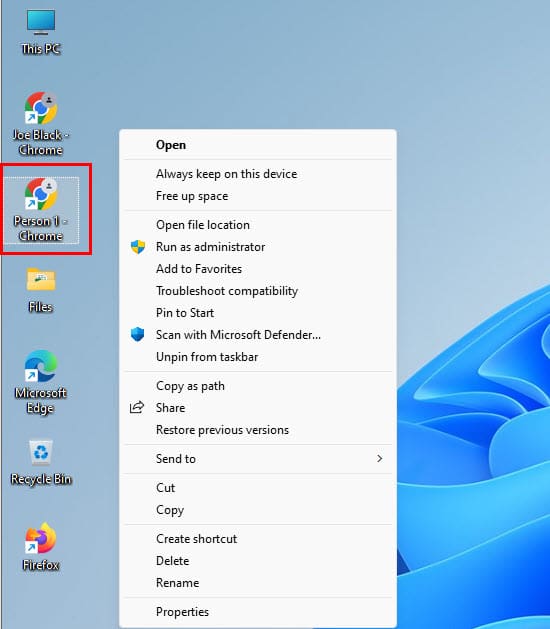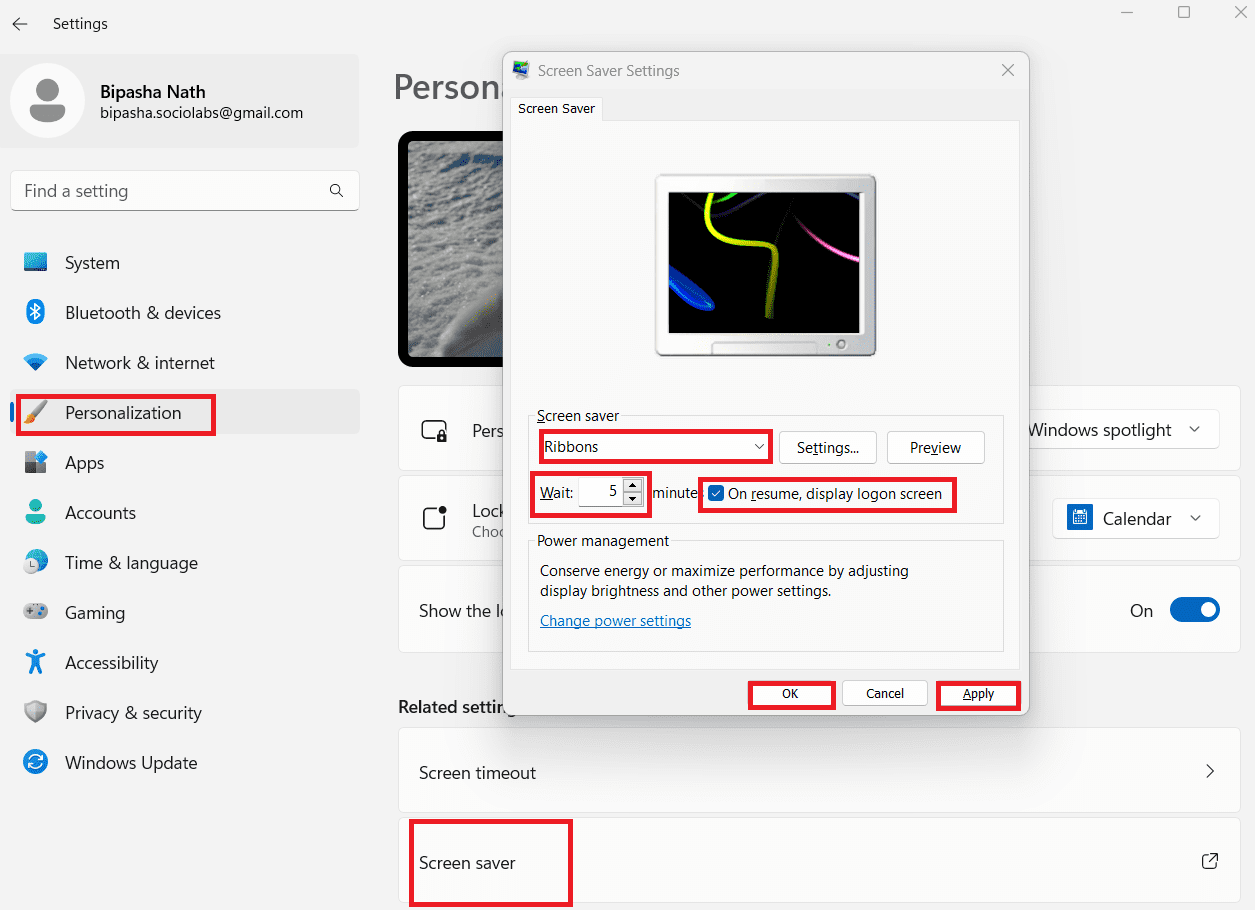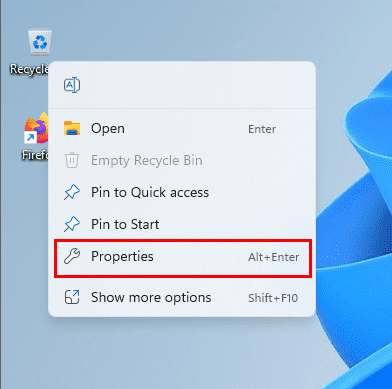在 Windows 11 中执行系统还原的步骤

如果您的设备出现错误或崩溃,请按照 Windows 11 中系统还原的步骤,将您的设备恢复到先前版本。

如果您要升級到新 PC,很可能您正在嘗試重新使用舊 PC 上的硬盤驅動器。如果沒有,您可能打算將其送給家人或朋友。但是在繼續執行這些選項之前,您應該完全擦除舊硬盤驅動器,以便下一個人重新開始使用硬盤驅動器。
在這篇文章中,我們將介紹在Windows 11 中擦除硬盤驅動器的多種方法。
內容
為什麼要擦除硬盤驅動器?
在我們跳到這些方法之前,讓我們花一點時間了解為什麼應該擦除硬盤驅動器。
擦除硬盤驅動器背後更明顯的原因是從驅動器中刷新您的所有個人文件和應用程序,確保它們無法通過數據恢復工具恢復-無論是否恢復出廠設置。擦除驅動器的另一個原因可能是簡單地為新文件獲得更多存儲空間。或者,您可能只想通過全新安裝的 Windows 和硬盤驅動器的新分區從頭開始設置您的 PC。
不管是什麼原因,讓我們來看看擦除硬盤驅動器的先決條件。
擦硬盤前要做什麼?
在擦除驅動器之前,您需要注意一些事項。
讓我們來看看在 Windows 11 中擦除硬盤驅動器的方法。
如何在 Windows 11 或 10 上格式化驅動器
您可以通過多種方式格式化驅動器,具體取決於您對系統的訪問類型。使用以下最適合您當前情況和要求的指南之一。
這無疑是擦除硬盤驅動器的最簡單、最快捷的方法之一。該過程只需幾秒鐘,非常適合您想為硬盤驅動器上的新文件騰出空間。
注意:此方法僅適用於系統上的輔助驅動器,而不適用於啟動驅動器。
以下是步驟。
按Win key + r打開運行框。輸入“資源管理器”並按回車鍵。
您會看到一個標題為“文件資源管理器”的窗口打開。單擊“此電腦”。

您現在應該會看到連接到 PC 的所有驅動器。我們有三個驅動器,其中,我們將在本指南中使用“數據”驅動器。

您需要做的就是右鍵單擊要擦除的驅動器,然後單擊“格式化”。

您應該會看到一個帶有許多選項的小型“格式”彈出窗口。如果您想快速擦除數據,而又不想弄亂其他選項,請單擊“開始”按鈕。
提示:要進行更安全的數據擦除,請取消選中“快速格式化”選項,然後單擊“開始”。請記住,徹底擦除比快速格式化需要更長的時間。

擦除完成後,您應該會看到一條消息確認相同。單擊“確定”以解除警報。
您的驅動器現已完全清潔,可以再次使用。
方法#2:使用磁盤管理
打開開始菜單並輸入“磁盤管理”。單擊搜索結果或打開按鈕。

以下是磁盤管理工具的外觀。

右鍵單擊要擦除的捲,然後單擊“格式”。

在下一個彈出窗口中,您應該有一些選項,例如更改卷的名稱、文件系統等。
同樣,就像之前的方法一樣,如果您不想等待很長時間來擦除驅動器,您應該保持勾選“執行快速格式化”選項。
提示:要徹底擦除驅動器上的所有數據痕跡,請取消選中“執行快速格式化”選項。
單擊“確定”按鈕開始擦除驅動器。

單擊“確定”按鈕確認數據擦除,您的驅動器應在幾分鐘內清理乾淨。
方法 #3:在 CMD 中使用 Diskpart(命令提示符)
Diskpart 是一個命令行實用程序,可用於管理連接到 PC 的所有驅動器。您可以使用diskpart 完成從列出磁盤、創建和刪除分區等操作。
讓我們來看看如何使用 diskpart 擦除硬盤驅動器。
按Win key + r打開運行框。輸入“cmd”並按下Ctrl + Shift + Enter按鍵,而不僅僅是回車鍵。這將打開一個提升的命令提示符。
提升的命令提示符的默認路徑應如下所示。

輸入“diskpart”並按回車鍵。您現在應該位於 diskpart 實用程序中。

輸入“list disk”並按回車鍵。這應該列出連接到您的 PC 的所有磁盤。

要繼續進行磁盤擦除,請輸入“選擇磁盤”。我們的筆記本電腦有兩個硬盤驅動器,對於本指南,我們將繼續使用磁盤 1,因此我們輸入“選擇磁盤 1”並按 Enter。

輸入“乾淨”並按回車鍵。

您的磁盤現在應該完全為空並變成未分配的空間。您的下一個任務應該是使用我們之前使用的磁盤管理工具創建分區。只需運行該工具並初始化磁盤。之後,您應該能夠創建最適合您的任何大小的分區。
方法 #4:使用重置選項
Windows 11 帶有一個名為“重置此 PC”的選項,可將 Windows 重置為其出廠設置。重置此 PC 的最佳部分是它為用戶提供了保留所有文件並重置 Windows 或在重置 Windows 時刪除所有內容的選項。
如果您只是為了重新安裝 Windows 而擦除驅動器,我們建議您在繼續全新安裝之前嘗試此方法。
這是您如何做到的。
打開開始菜單並輸入“重置這台電腦”。點擊彈出的搜索結果或點擊打開按鈕。

單擊“重置 PC”按鈕以觸發 Windows 重置過程。

您應該會看到一個帶有兩個選項的藍屏。單擊“刪除所有內容”以重新安裝 Windows,同時刪除所有文件、應用程序和設置。

下一個屏幕應該會詢問您希望如何重新安裝 Windows。如果您的 PC 有互聯網連接,您可以繼續“雲下載”選項,否則繼續“本地重新安裝”。

按照屏幕上的其餘說明進行操作,您的 PC 很快就會準備好全新安裝的 Windows 11,並且硬盤驅動器上沒有舊文件和應用程序的痕跡。
方法#5:使用PowerShell
您還可以使用 PowerShell 格式化驅動器。按照以下步驟在 Windows 11 上使用 PowerShell 格式化驅動器。
按下Windows + S鍵盤並蒐索 PowerShell。一旦它出現在您的搜索結果中,點擊“以管理員身份運行”。
鍵入以下命令以獲取系統上安裝的磁盤中所有捲的列表。這將幫助您識別並找到要格式化的磁盤。
get-volume

選擇您要格式化的捲,然後使用下面的命令來選擇它。用分配給相關卷的字母替換 X。
select X

現在使用下面的命令來格式化選定的捲。將 NAME 替換為您選擇的名稱,該名稱將在格式化後分配給該卷。
format-volume -filesystem NTFS -newfilesystemlabel NAME

就是這樣!現在將格式化相關驅動器上的選定卷。等待該過程完成並關閉 PowerShell 以照常使用磁盤。
方法#6:使用第三方實用程序
有大量的分區管理器可以幫助您輕鬆管理和格式化系統上安裝的所有磁盤。請按照以下指南開始。我們將在本指南中使用 Gnome 分區管理器,這是一個長期值得信賴的完全免費的行業工具。使用下面的鏈接將其下載到本地存儲。
將 GParted 下載到您的系統後,您可以像安裝任何其他 ISO 一樣簡單地安裝它並開始使用。如果您希望清理和擦除啟動驅動器,我們建議您將 ISO 安裝到可移動媒體,這樣您就可以在當前 Windows 11 安裝之外格式化驅動器。安裝後,重新啟動系統並從引導菜單訪問 Gnome 分區管理器。我們將使用 Rufus 將磁盤映像掛載到可移動媒體,然後重新啟動我們當前的系統。
注意:確保在您的系統上禁用安全啟動,以便您可以從 USB 啟動。此外,如果可用,請將您的存儲配置切換到 AHCI 而不是 Intel Optane 內存。如果存儲配置未設置為 AHCI,GParted 將無法識別您的驅動器。
啟動到 USB 驅動器後,您將可以選擇使用各種設置啟動 GParted。我們建議您選擇第一個選項並選擇“使用默認設置啟動 GParted”。

現在將提示您選擇一個鍵盤映射。如果您的鍵盤被 Gnome 錯誤識別,此頁面會派上用場。如果您的鍵盤似乎有響應,則選擇“不要觸摸鍵盤映射”以繼續該過程。

現在繼續並通過輸入相應的數字來選擇您的語言。如果您想選擇美國英語,請輸入“33”。

現在將詢問您是否希望使用強制視頻驅動程序或默認設置加載 GParted。如果 GParted 無法識別您的顯示器或者您的系統有分辨率問題,強制視頻驅動程序選項會派上用場。我們建議您選擇第一個選項。輸入“0”以選擇該選項。

GParted 現在將被引導,您將被帶到它的臨時桌面。分區管理器現在應該會在您的系統上自動啟動。單擊左上角的下拉菜單,然後選擇要格式化的所需磁盤。

您現在將獲得所選磁盤上現有捲的列表。單擊並選擇要格式化的捲。

現在單擊頂部的“分區”並將鼠標懸停在“格式為”上。

選擇所需的驅動器格式,但建議您在所有現代系統的 NTFS 中格式化驅動器。

一旦您選擇了所需的磁盤格式,GParted 將在其任務列表中提示當前操作。單擊任務工具欄中的複選標記以執行提示的任務。

單擊“應用”以確認您的選擇。

GParted 現在將執行必要的操作,並且在此過程結束時應自動格式化所選卷。關閉 GParted 實用程序並單擊桌面上的電源圖標。單擊並選擇“重新啟動”,然後單擊“確定”。
啟動到系統上的 BIOS 並恢復您之前所做的更改。這包括啟用安全啟動、將您的存儲配置更改回其默認設置以及更改您的啟動設備順序。
恢復更改後,拔下 USB 並退出 BIOS,同時保存所做的更改。
您現在將正常啟動到 Windows,現在應該在您的系統上格式化和擦除所選卷。
方法 #7 從恢復
如果您在 Windows 恢復環境中並且無法啟動到 Windows,那麼您可以使用下面的指南來格式化系統上的驅動器。請記住,不建議使用以下指南從恢復環境中格式化引導驅動器,因為這可能會導致引導驅動器出現問題並使其無法識別。然後,您必須完全格式化驅動器並重新設置並在其上安裝新版本的 Windows。因此,請僅使用以下指南從恢復環境格式化輔助驅動器,或確保您手邊有 Windows 11 安裝介質以重新安裝將從引導驅動器中刪除的操作系統。
進入 Windows 恢復或故障排除屏幕後,單擊並選擇“高級選項”。

單擊“疑難解答”。

再次選擇“高級選項”。

現在單擊“命令提示符”以啟動命令提示符。

鍵入以下命令以啟動 diskpart 實用程序。
diskpart

現在執行以下命令。
list volume

找到您要格式化的捲並使用下面的命令來選擇它。將 X 替換為您選擇的捲的專用編號。
select volume x

現在使用以下命令將選定的捲格式化為 NTFS 作為其格式。將 NAME 替換為您希望為新格式化的捲提供的名稱。
format fs=ntfs quick label=NAME

讓diskpart 做它的事情,卷應該在幾秒鐘內被格式化。格式化後,輸入以下命令退出 CMD。
exit

現在重新啟動您的 PC,所選的捲應該在您的系統上進行格式化。
方法 #8:使用 Windows 安裝程序
您也可以直接使用 Windows 設置格式化驅動器。根據您的要求,您可以退出安裝程序或繼續在新格式化的驅動器上安裝 Windows。
在啟動時出現提示時,從安裝介質啟動 Windows 安裝程序。啟動設置後,選擇您的語言並單擊“下一步”。
單擊“安裝 Windows”。
Windows 安裝程序現在將檢測系統上安裝的驅動器。單擊並選擇要格式化的驅動器,然後單擊底部的“格式化驅動器”。
確認您的選擇,Windows 現在將繼續格式化所選驅動器。
就是這樣!格式化驅動器後,您可以使用安裝程序繼續格式化系統上的其他驅動器,或者根據您的要求繼續進行 Windows 安裝。
如何在 Windows 11 或 10 上完全格式化驅動器
完全格式化驅動器與上面列出的傳統格式化方法略有不同。雖然上面列出的方法將從驅動器中刪除您的所有數據,但現有分區將保留。此外,如果它是我們正在談論的引導驅動器,那麼驅動器上還會有恢復和 EFI 分區。雖然這在您的系統上應該不是問題,但在切換系統時它們可能會導致問題,因為新系統可能會錯誤地識別引導順序或恢復媒體。
在這種情況下,您可以擦除驅動器中的所有分區並對其進行完全格式化。然後,您可以根據要切換到的新系統的需要在驅動器上創建新分區和卷。按照以下指南之一完全格式化驅動器並刪除所有分區和卷。
方法#1:來自第三方實用程序
如果您希望使用第三方實用程序完全格式化您的驅動器,我們建議您使用 Gnome 分區管理器。這是一個託管在 Sourceforge 上的開源且完全免費的實用程序。您甚至可以自己編譯二進製文件,以防隱私受到關注。請按照以下指南開始。Gnome 分區管理器以 ISO 格式提供,允許您將其安裝到可移動媒體並單獨使用,以防您希望完全格式化引導驅動器。使用 Rufus 使用 Gnome 分區管理器 ISO 創建 USB 安裝介質。
必需的
指導
Make the necessary BIOS changes on your system and plug in the GParted USB into your system. Once plugged in, reboot your device and boot from the USB by pressing a key if prompted.
You will now be at the GParted Splash Screen where you will be requested to select the relevant version of GParted that you wish to use. We recommend you select the first one which is GParted Live with default settings.

Once booted, you will be prompted to change your keymap if needed. If your keyboard seems to be working as intended, select ‘Don’t touch keymap’ or use one of the other options to get keyboard working within Gnome.

Select your preferred language by entering its relevant number. Use number 33 for US English.

Now if you wish to manually install or configure your video output then enter 1 on the next screen. Else if the resolution and video response times seem to be fine for now then enter ‘0’.

GParted will now boot with the dictated settings. Once launched, you will be taken to the temporary desktop where the GParted utility will be launched automatically. Click on the drop-down menu in the top right corner and select the desired disk that you wish to completely format.

Now select a volume on the selected disk and click on ‘Partition’ at the top. Select ‘Format to’ and then select ‘NTFS’.

Repeat the steps above for all the partitions on the disk. Once each partition is cued for formatting, click on the checkmark in your toolbar to execute these tasks.

Confirm your choice by clicking on ‘Apply’.

All the selected partitions will now be formatted. We can now delete these partitions. Click and select each partition one by one and then click on the X in your toolbar. This will cue each partition for deletion.

Click on the checkmark again to delete all the selected partitions.

Confirm your choice by clicking on ‘Apply’.

Once all partitions are deleted from the disk, click and select the unallocated volume on the disk and then click on ‘New’ at the top. If you have an existing primary partition on the disk then select that partition and click on the ‘Resize’ icon instead.

Select the entire size of your disk and enter a name for your disk beside the label text field. If resizing an existing partition, use the slider at the top to drag it to the maximum size.

Click on ‘Ok’ or ‘Resize/Move’ depending on your choice.

And that’s it! Your entire drive should now be formatted and a single partition equal to the entire size of your drive should now be created which will allow you to use the drive, however, you wish. You can now exit GParted by clicking on the power icon on the desktop. Once rebooting, boot into your BIOS and revert the changes you made earlier. Once reverted, unplug the USB and boot into Windows normally.
Method #2: From CMD
Diskpart is a hugely versatile utility that can be used to completely format a drive as well. Once completely formatted via diskpart, you will need to set your disk as GPT or MBR depending on your platform needs for the drive to be recognized properly.
Launch CMD using one of the guides above depending on the current state of your system. Once CMD is launched, enter the command below to launch diskpart.
diskpart

Now enter the following command and find the disk you wish to completely format.
list disk

Note down the concerned disk’s number and use the command below to select it. Replace N with the disk number you noted down earlier.
select disk N

Now enter the command below to clean your disk.
clean

We will now need to create a partition on the selected disk so that it is usable. Enter the command below to get started.
create partition primary

Use the command below to format the newly created volume now.
format fs=ntfs

Enter the following command to assign a letter to the drive. Replace X with the letter of your choice.
assign letter=X

And that’s it! The selected drive should now be completely formatted. Any recovery or EFI partitions on the drive should also now be deleted.
How to switch between MBR and GPT
MBR and GPT are types of disk setups that are used to install new OS on a drive. These types are essential in case you are trying to switch between platforms or use Linux on yoru system. While GPT is a new disk setup with various advantages, MBR is still the most compatible setup format out there. If you are trying to switch your disk setup from MBR to GPT or vice versa then you can use the guide below to change the disk type.
Note: When converting, your disk will be cleaned and all the data will be removed from it. You will need to create new partitions on the drive as well so ensure that you have backed up your data before proceeding with the guide below.
Launch CMD on your system either from the recovery environment or from within Windows depending on the current state of your system. Once launched enter the command below to launch the diskpart utility.
diskpart

Now enter the following command to get a list of all the disks on your system. Note down the number for the concerned list so that you can access it later on.
list disk

Enter the following command and replace N with the disk number you noted down earlier.
select disk N

Use the command below to clean the drive.
clean

Now let’s convert the drive to your desired disk type. Replace TYPE with MBR or GPT depending on your current requirements.
convert TYPE

Once the disk has been converted, use the command below to create a primary partition.
create partition primary

Now use the command below to assign a letter to the drive. Replace X with the drive letter of your choice.
assign letter=X

And that’s it! You will now have converted the selected drive to GPT or MBR depending on your current requirements.
How to create new volumes and partitions
Once you have formatted your drives you will find that it is not that easy to use them within Windows. Formatted drives need dedicated partitions which can then be used as storage spaces to store your data or install an OS. Use the guide below to create custom partitions for a selected drive in Windows 11.
Method #1: From CMD
Launch CMD and use the command below to enter diskpart.
diskpart

Enter the following command to get a list of all the disks installed on your system. Note down the disk number of the concerned disk.
list disk

Now enter the command below and replace N with the disk number you noted down earlier.
select disk N

Use the command below to create a custom partition on the selected disk drive. If a partition already exists on the drive then replace ‘primary’ with ‘extended’. Additionally, replace XXXX with the size of your choice for the partition. The size is measured in megabytes where 1000MB = 1GB.
create partition primary size=SIZE

Now enter the following command. Your newly created partition will now show up in this list. Note down its volume number
list volume

Enter the following command and replace N with the volume number you noted down earlier.
select volume N

Now use the following command to assign a letter to the selected volume. Replace X with the letter of your choice.
assign letter=X

And that’s it! You will now have created a new partition on the selected drive depending on your current needs and requirements.
Method #2: From Disk Management
You can also create a new partition son your system using the Disk Management utility provided within Windows. Use the guide below to get you started.
Press Windows + R on your keyboard and type in the following. Press Enter on your keyboard to launch the disk management utility.
diskmgmt.msc

Once the disk management utility is launched, you will get a graphical representation for all your drives. Right-click on the unallocated space at the bottom of your screen and click on ‘New Simple Volume’.

The volume creation wizard will now be launched. Click on ‘Next’ to get started.

Select a custom size if needed. By default, Windows will use the entire unallocated space to create a new simple volume on your drive. Click on ‘Next’ once you have set the desired size.

Choose a drive letter for your new volume now. Click on ‘Next’ once you are done.

You will now be given the option to format the unallocated space before the volume is created. Choose your disk format by clicking on the drop-down menu and set a name for the new volume beside Volume Label. If you do not wish to format the unallocated space, then click and select ‘Do not format this volume’. Click on ‘Next once you are done.

Finally, click on ‘Finish’ and the new volume will now start being created.

And that’s it! A new volume should now be created on the selected drive.
We hope this guide helped you easily format or wipe your drive in Windows 11 depending on your current needs and requirements. If you face any issues or have any questions for us, feel free to reach out to us using the comments section below.
Related:
如果您的设备出现错误或崩溃,请按照 Windows 11 中系统还原的步骤,将您的设备恢复到先前版本。
如果你在寻找最佳的Microsoft Office替代品,这里有六个优秀的解决方案供你参考。
本教程向您展示如何创建一个 Windows 桌面快捷方式图标,该图标打开一个命令提示符到特定文件夹位置。
在Microsoft Windows中右键单击应用程序图标时,“以不同用户身份运行”选项缺失?您可以使用这些方法来启用它。
不想让其他人在您离开时访问您的计算机?尝试这些有效的锁定Windows 11屏幕的方法。
如果您的计算机在安装最近的Windows更新后出现问题,请了解几种修复损坏的Windows更新的方法。
你是否在尝试找出如何在Windows 11中将视频设置为屏幕保护程序。我们揭示了如何使用一种适用于多种视频文件格式的免费软件来实现。
您在 Windows 11 中的旁白功能烦吗?了解如何通过多种简单方法禁用旁白声音。
想要在 Windows 11 PC 上禁用删除确认对话框吗?请阅读本文,了解各种方法。
维护多个电子邮件收件箱可能很痛苦,特别是当您有重要邮件同时到达时。本文将介绍如何在PC和Apple Mac设备上将Microsoft Outlook与Gmail同步的简单步骤。







